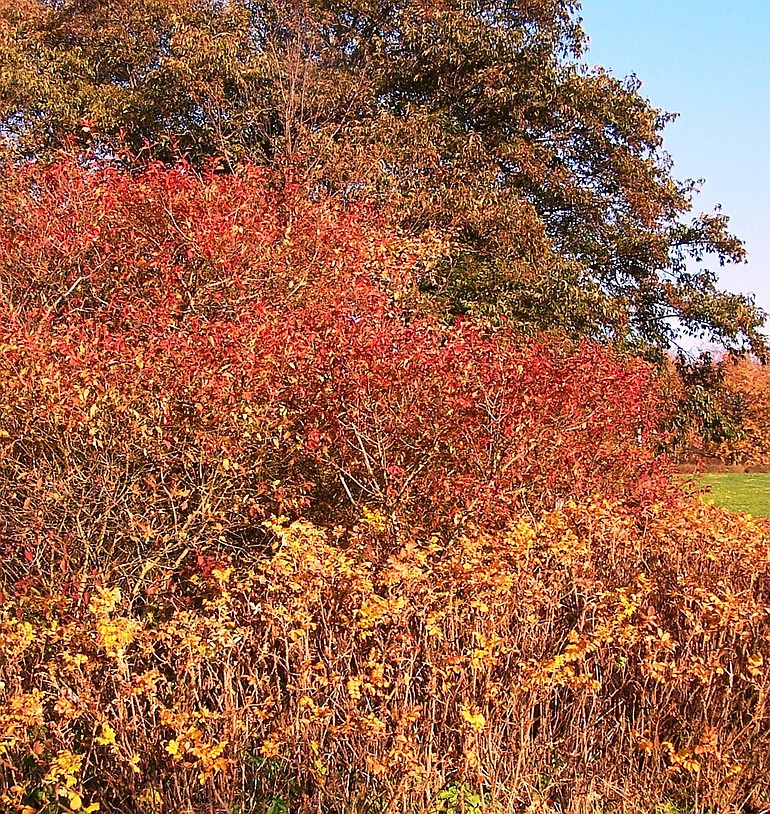In our fickle autumn season, there are inevitably days of such intense variety that my garden spirits rise up to take notice.
To the gardener, and especially the plant collector, this is when the quality of sunshine is as variable as the seasonal foliage color. Many of the plants we simply had to have a year or two ago have come back into strong focus with colorful foliage, fruit or seed production. Now, their unique autumn characteristics stand out from the rest.
When the subject of adding new plants to the autumn garden comes up, there is no limit to the list of personal favorites offered up by fellow gardeners.
Plant suggestions at this time of year will include deciduous and evergreen trees, shrubs, ground covers and vines and the plethora of seasonal perennial favorites. When you add in the bulbs that we plant now to bloom next spring, the list includes any plants that are fully hardy to the climate zones in our area.
The best garden centers know that gardeners want new plant varieties that reflect the current season. A trip to Garden Fever, my favorite nursery and garden supply store, never fails to entice me further in with the latest plant introductions. Garden Fever (http://www.gardenfever.com) is located in Portland but owned and operated by Clark County residents Richard and Lori Volmer.
On a visit last week, I found myself salivating over a Pink Snowberry bush, a variety of Symphoricarpos ssp., which is one of our most adaptable Northwest native plants. Pink Snowberry is a striking midsized deciduous shrub with fat, pearl-pink berries that stand out brightly against the pale blue-green foliage. The Snowberry bush thrives in sun or partial shade and flowers from June to November, probably beyond that in the Pacific Northwest.
Snowberries form dense thickets, which make them a good, low-maintenance ground cover that grows well even in difficult conditions. They are attractive to birds, providing winter shelter as well as nesting possibilities in spring.
Include evergreens
I can picture this lustrous Pink Snowberry planted at the foot of my “Silberlocke” Korean fir. Although I didn’t buy it during my recent nursery trip, it seems as though my one moment of restraint was just a way of putting off the inevitable.
If you are striving for a garden with all-year interest, include a selection of needled and broad-leaved evergreens. One of the most visually rewarding, all-year-interest plants is the dwarf Hinoki Cypress (Chamaecyparis obtusa “Nana Gracilis”). This softly textured evergreen shrub looks beautiful all year round, with branches that come off the main trunk in flat, sculptural clusters of scalelike needles.
There is a Hinoki cypress for everyone. Some have rounded clumps with mottled gold and green foliage, others are tall, elegant emerald green varieties that frame an entry like stately guardsmen.
An incredible assortment of perennial or cranesbill geraniums grow to perfection in the Southwest Washington garden. Most varieties establish easily. The majority will rebloom if cut back immediately after a flush of blossoms begins to fade.
In my garden, two rebloom reliably without deadheading. Geranium “Rozanne” is a vigorous grower with a prolific display of blue-violet flowers with pale centers highlighted by razor thin burgundy stripes. Geranium “Bees Jubilee” forms a larger clump of healthy, deep green foliage and has an exceptionally long flower season in my garden.
In the past few years, I have become partial to “Bees Jubilee,” which I planted in a large planter and placed in a semi-shady position on the front deck. This year I moved it into the barn beds where it has bloomed steadily from late May all the way into October.
With so many choices, the hardest decision for most of us is where to start and when to stop when adding plants to the garden. Remember to mix evergreens and deciduous plants in the garden. Think of perennials as points of seasonal interest with flowers and foliage that will complement your established plant palette. Talk to gardeners and ask for their suggestions. When you see a plant you love, write down the name.
Autumn is the time of year to choose any tree that is cherished for its fall color. This sounds obvious, but I think we often forget that individual plants can be as unique as individual people. Despite the general plant dictionary description of a plant family, autumn color will vary from plant to plant. Why not take the time to search out the plant that is perfect for a particular place? Go out on a limb and pick the plants that inspire you to garden.
Robb Rosser is a WSU-certified Master Gardener. Reach him at Write2Robb@aol.com.



